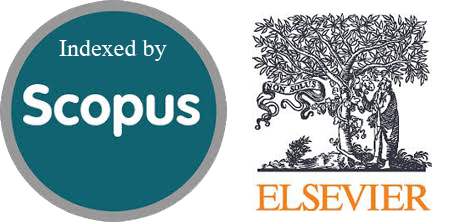Optimizing Sensitivity in Machine Learning Models for Pediatric Post-operative Kyphosis Prediction
Abstract
Post-operative kyphosis represents a significant complication following pediatric spinal corrective surgery, necessitating sophisticated prediction methods to identify high-risk patients. This study developed and evaluated machine learning models for kyphosis prediction using a dataset of 81 pediatric patients by comparing the logistic regression and decision tree approaches. Despite achieving a higher overall accuracy (82%), the logistic regression model failed to identify any kyphosis cases, rendering it clinically ineffective. Conversely, the decision tree model demonstrated superior clinical utility by successfully identifying 33% of kyphosis cases while maintaining 71% accuracy. Feature importance analysis established starting vertebral position as the dominant predictor (importance=0.554), followed by patient age (0.416), with vertebrae count contributing minimally (0.030). The decision tree identified critical thresholds for risk stratification: operations beginning at or above T8-T9, particularly in children aged 5-9 years, carried a substantially elevated kyphosis risk. Our methodological approach emphasizes sensitivity over conventional accuracy metrics, recognizing that missing high-risk patients have greater clinical consequences than unnecessary monitoring. This study demonstrates the capacity of decision tree models to extract clinically meaningful patterns from small, imbalanced surgical datasets that elude conventional statistical approaches.
Downloads
References
Agus Perdana Windarto, Anjar Wanto, S Solikhun, and Ronal Watrianthos, “A Comprehensive Bibliometric Analysis of Deep Learning Techniques for Breast Cancer Segmentation: Trends and Topic Exploration (2019-2023),” Jurnal RESTI (Rekayasa Sistem dan Teknologi Informasi), vol. 7, no. 5, pp. 1155–1164, Oct. 2023, doi: 10.29207/resti.v7i5.5274.
S. M. D. A. C. Jayatilake and G. U. Ganegoda, “Involvement of Machine Learning Tools in Healthcare Decision Making,” J Healthc Eng, vol. 2021, pp. 1–20, Jan. 2021, doi: 10.1155/2021/6679512.
P.-H. C. Chen, Y. Liu, and L. Peng, “How to develop machine learning models for healthcare,” Nat Mater, vol. 18, no. 5, pp. 410–414, May 2019, doi: 10.1038/s41563-019-0345-0.
L. Adlung, Y. Cohen, U. Mor, and E. Elinav, “Machine learning in clinical decision making,” Med, vol. 2, no. 6, pp. 642–665, Jun. 2021, doi: 10.1016/j.medj.2021.04.006.
A. Awaysheh, J. Wilcke, F. Elvinger, L. Rees, W. Fan, and K. L. Zimmerman, “Review of Medical Decision Support and Machine-Learning Methods,” Vet Pathol, vol. 56, no. 4, pp. 512–525, Jul. 2019, doi: 10.1177/0300985819829524.
W. T. Stam et al., “Machine learning models in clinical practice for the prediction of postoperative complications after major abdominal surgery,” Surg Today, vol. 53, no. 10, pp. 1209–1215, Oct. 2023, doi: 10.1007/s00595-023-02662-4.
A. Abbasi et al., “Interpretable machine learning-based predictive modeling of patient outcomes following cardiac surgery,” J Thorac Cardiovasc Surg, vol. 169, no. 1, pp. 114-123.e28, Jan. 2025, doi: 10.1016/j.jtcvs.2023.11.034.
O. Elfanagely et al., “Machine Learning and Surgical Outcomes Prediction: A Systematic Review,” Journal of Surgical Research, vol. 264, pp. 346–361, Aug. 2021, doi: 10.1016/j.jss.2021.02.045.
S. Samsir, J. H. P. Sitorus, Zulkifli, Z. Ritonga, F. A. Nasution, and R. Watrianthos, “Comparison of machine learning algorithms for chest X-ray image COVID-19 classification,” J Phys Conf Ser, vol. 1933, no. 1, p. 012040, 2021, doi: 10.1088/1742-6596/1933/1/012040.
L. V. Floccari and T. A. Milbrandt, “Surgical Site Infections After Pediatric Spine Surgery,” Orthopedic Clinics of North America, vol. 47, no. 2, pp. 387–394, Apr. 2016, doi: 10.1016/j.ocl.2015.09.001.
P. Katiyar, V. Boddapati, J. Coury, B. Roye, M. Vitale, and L. Lenke, “Three-Dimensional Printing Applications in Pediatric Spinal Surgery: A Systematic Review,” Global Spine J, vol. 14, no. 2, pp. 718–730, Mar. 2024, doi: 10.1177/21925682231182341.
O. Yaman and S. Dalbayrak, “Kyphosis and review of the literature,” Turk Neurosurg, vol. 24, no. 4, 2013, doi: 10.5137/1019-5149.JTN.8940-13.0.
A. Gadia, K. Shah, and A. Nene, “Cervical Kyphosis,” Asian Spine J, vol. 13, no. 1, pp. 163–172, Feb. 2019, doi: 10.31616/asj.2018.0086.
S. K. Verma et al., “Correction of pediatric cervical kyphosis with standalone posterior approach—a single-center experience of seven cases,” Child’s Nervous System, vol. 39, no. 1, 2023, doi: 10.1007/s00381-022-05697-z.
J. Ebot, S. Foskey, R. Domingo, and E. Nottmeier, “Kyphosis Correction in Patients Undergoing a Four-Level Anterior Cervical Discectomy and Fusion,” Cureus, 2020, doi: 10.7759/cureus.8826.
J. S. Kim et al., “Surgical, Radiographic, and Patient-Related Risk Factors for Proximal Junctional Kyphosis: A Meta-Analysis,” Global Spine J, vol. 9, no. 1, pp. 32–40, Feb. 2019, doi: 10.1177/2192568218761362.
Y. Ogura, J. R. Dimar, M. Djurasovic, and L. Y. Carreon, “Etiology and treatment of cervical kyphosis: state of the art review—a narrative review,” Journal of Spine Surgery, vol. 7, no. 3, pp. 422–433, Sep. 2021, doi: 10.21037/jss-21-54.
G. W. Johnson et al., “Artificial Intelligence to Preoperatively Predict Proximal Junction Kyphosis Following Adult Spinal Deformity Surgery: Soft Tissue Imaging May Be Necessary for Accurate Models,” Spine (Phila Pa 1976), vol. 48, no. 23, pp. 1688–1695, Dec. 2023, doi: 10.1097/BRS.0000000000004816.
P. G. Passias et al., “Predicting the Occurrence of Postoperative Distal Junctional Kyphosis in Cervical Deformity Patients,” Neurosurgery, vol. 86, no. 1, pp. E38–E46, Jan. 2020, doi: 10.1093/neuros/nyz347.
A. Basit, “Kyphosis Dataset,” Kaggle.com.
H. A. Gouda, M. A. Ahmed, and M. I. Roushdy, “Optimizing anomaly-based attack detection using classification machine learning,” Neural Comput Appl, vol. 36, no. 6, 2024, doi: 10.1007/s00521-023-09309-y.
C. Wang, N. Yang, W. Xu, J. Wang, J. Sun, and X. Chen, “Research on a text data preprocessing method suitable for clustering algorithm,” in 2022 3rd International Conference on Information Science, Parallel and Distributed Systems, ISPDS 2022, 2022. doi: 10.1109/ISPDS56360.2022.9874172.
S. N. Safitri, H. Setiadi, and E. Suryani, “Educational Data Mining Using Cluster Analysis Methods and Decision Trees based on Log Mining,” Jurnal RESTI (Rekayasa Sistem dan Teknologi Informasi), vol. 6, no. 3, pp. 448–456, 2022, doi: 10.29207/resti.v6i3.3935.
A. Fattah, M. M., P. S., and T. F., “A Decision Tree Classification Model for University Admission System,” International Journal of Advanced Computer Science and Applications, vol. 3, no. 10, 2012, doi: 10.14569/ijacsa.2012.031003.
Copyright (c) 2025 Jurnal RESTI (Rekayasa Sistem dan Teknologi Informasi)

This work is licensed under a Creative Commons Attribution 4.0 International License.
Copyright in each article belongs to the author
- The author acknowledges that the RESTI Journal (System Engineering and Information Technology) is the first publisher to publish with a license Creative Commons Attribution 4.0 International License.
- Authors can enter writing separately, arrange the non-exclusive distribution of manuscripts that have been published in this journal into other versions (eg sent to the author's institutional repository, publication in a book, etc.), by acknowledging that the manuscript has been published for the first time in the RESTI (Rekayasa Sistem dan Teknologi Informasi) journal ;







